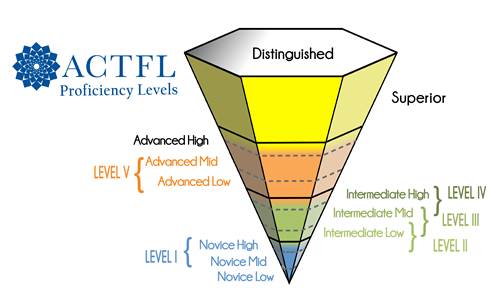World Language
Page Navigation
-

 Why should I learn ASL?
Why should I learn ASL?The benefits of learning sign language at an early age are numerous. According to Lead with Languages, American Sign Language (ASL) is one of the most widely used languages in the United States, and the fourth-most studied second language at American universities. At least 35 states have recognized ASL as a modern language for public schools, and hundreds of colleges and universities in the United States are offering ASL classes.
ASL is primarily used by American and Canadians who are either deaf or hard of hearing. There are approximately 250,000 – 500,000 ASL users in the United States and Canada, most of whom use ASL as their primary language.
 ASL Communication Skills
ASL Communication SkillsASL is a signed language where the modes of communication involve different skills than written and/or spoken languages. ASL is not a formal written language; glossing is the term used to describe a chosen written system of symbols devised to transcribe signs and nonmanual signals to an English equivalent.
Since ASL information is received visually and not in an auditory manner, communication skills in ASL are defined as follows:
- (A) interpretive listening and reading targets are called interpretive receptive;
- (B) one-to-one interpersonal targets are called receptive and expressive;
- (C) one-to-many presentational speaking is expressed through signs and the target is presentational expressive.
 Important Considerations:
Important Considerations:ASL difficulty has been determined by standards of the Foreign Service Institute and Defense Language Institute as a Level IV out of four (Level IV being the most difficult). The American Sign Language Teachers Association (ASLTA) states the challenge to ASL is primarily in the modality of learning. This conclusion is based on the complex grammar system and significant structural and cultural differences in the language. Students are generally seated in a semi-circle to facilitate visual communication, notes cannot be taken without looking away from the primary source of information, and instruction occurs in the target language where learning is done spatially and words are not processed sequentially. The linear nature of spoken language cannot be used in ASL and the simultaneous expression of complex units is used. The level of difficulty of ASL should be noted.
-
ASL Teacher:
- email | website


